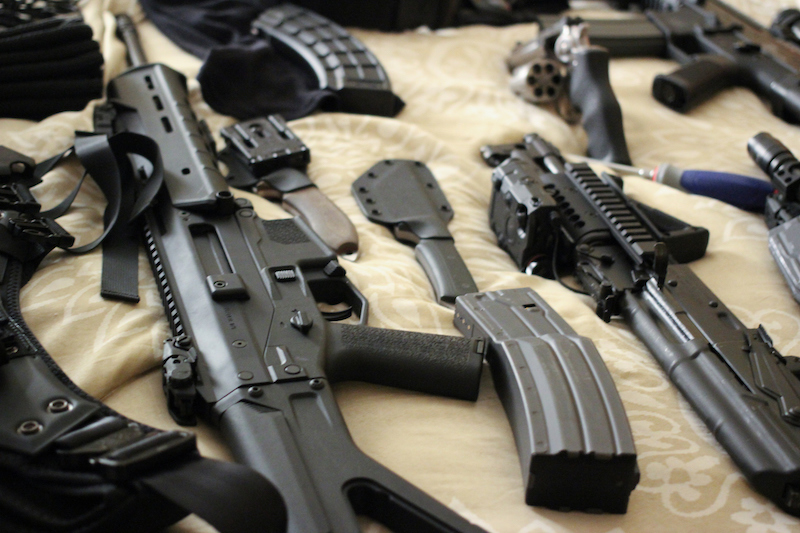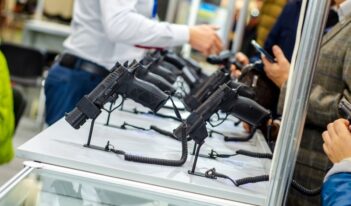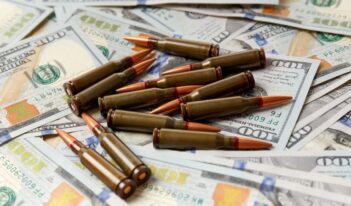
Attempts to regulate “assault weapons” will be futile as long as the term lacks a clear definition.
Responsible regulation requires accurate definition. For example, when we discuss regulations for “handguns,” everyone understands the type of gun at issue. In contrast, “assault weapon” has no fixed meaning. Unlike handguns, “assault weapons” have no common characteristics.
Different pieces of legislation purporting to address “assault weapons” have variously covered the following types of arms:
Some air guns and paintball guns. These guns use compressed air or carbon dioxide to shoot a BB, a small pellet, or a paintball marker. They are not firearms, because they do not use gunpowder. Some of them fire semi-automatically. That is, after pressing the trigger to release one shot, the user can press the trigger for another shot, without needing to take an additional step, such as moving a lever, slide, or bolt. A 1990 New Jersey statute outlawed semiautomatic air and paintball guns as “assault weapons.” However, a federal district court invalidated the state restriction based on a federal statute against bans on such items.
Most handguns. A 2013 Illinois “assault weapons” bill encompassed all semiautomatic rifles or handguns that can accept a detachable magazine. Semiautomatic pistols constitute more than 80 percent of handguns currently manufactured, and almost all of them use detachable magazines.
Most rifles. A 2013 Colorado bill defined an “assault weapon” as all firearms except “handguns, shotguns, and bolt-action rifles,” thus encompassing most rifles. So, under that definition, “assault weapons” would include single-shot rifles (first sold in the 17th century), lever-action rifles (first available in 1855), slide action rifles (which started with the 1884 Colt Lightning), and semiautomatic rifles (introduced in 1885).
All semiautomatic rifles. According to a 2018 ballot initiative in Washington State, purchasing any semiautomatic rifle—which goes all the way back to the first such American rifle, the Winchester of 1903—would require the owner to waive medical privacy and accept regular government inspections of her medical records. Yet the Winchester 1903 rifle uses the low-power .22 caliber cartridge and has a maximum ammunition capacity of ten rounds, contained in a fixed tubular magazine under the barrel.
Most shotguns. In 2003, an Illinois bill for which then-state senator Barack Obama voted would have outlawed all firearms with a bore diameter larger than .50 inch. This bill would have covered all shotguns except for the smallest, the .410 caliber.
All slide action shotguns. Patented in 1854, these guns usually hold five to eight cartridges. In Australia, all such guns were confiscated using gun registration lists. The Australia program is often touted as a model for the United States.
Remington 11-87 shotgun. This gun was famously used by then-Senator and presidential candidate John Kerry (D-Mass.) on Labor Day 2004 to demonstrate his excellent trap-shooting skills. It would be prohibited under an “assault weapon” bill sponsored by Senator Dianne Feinstein (D-Calif.), because the stock has a small protrusion that improves the user’s grip.
Whatever semiautomatic firearm the Secretary of the Treasury declares to be an “assault weapon.” The principle of administrative prohibition was contained in the U.S. Senate’s first “assault weapons” bill by Senator Howard Metzenbaum (D-Ohio) in 1989. Because semiautomatics account for most handguns and a large share of rifles and shotguns, the potential scope of this administrative power would be vast. Where administrative bans are allowed, as in Massachusetts, they have been implemented vigorously.
Guns that have certain features. For example, features that have been singled out include bayonet lugs, adjustable stocks, muzzle brakes, and better grips.
Guns listed by name. Some bills specifically name fewer than two dozen models—as in Senator Feinstein’s 1994 federal ban, which sunset in 2004—while other legislative proposals list over 200 models, as Senator Feinstein’s current bill does. As the U.S. Court of Appeals for the Sixth Circuit held in 1994, in a case about an ordinance in Columbus, Ohio, bans by name are “fundamentally irrational.”
These various definitions proliferate because the only common characteristics of “assault weapons” are that these guns are not what prohibitionists claim them to be. In particular, these guns are:
Not automatics or machine guns. “Assault weapon” laws do not cover automatics. Pursuant to the National Firearms Act of 1934, a “machine gun”—or “automatic” weapon—fires repeatedly when the trigger is pressed. The Act imposed a very strict tax and registration system for such guns. In 1986, subsequent amendments to that law prohibited the sale of new automatics to the civilian market.
Not “assault rifles.” According to the Defense Intelligence Agency, “assault rifles” are “short, compact, selective-fire weapons that fire a cartridge intermediate in power between a submachine gun and rifle cartridges.” All assault rifles are capable of automatic fire. Examples include the U.S. Army M-16, the Soviet AK-47, and the German Sturmgewehr. No guns that are dubbed “assault weapons” are assault rifles—but some of them do look similar, because the small parts that make a gun automatic are internal and not visible.
The debate over so-called assault weapons contrasts strikingly with proposals for the regulation of handguns. Handgun control has always been about guns that are genuinely distinctive. Compared to rifles or shotguns, handguns are easier to conceal, faster to deploy, and more maneuverable, especially indoors. For this reason, handguns are the most preferred guns for lawful defense—as Justice Antonin Scalia pointed out in District of Columbia v. Heller—and are also “overwhelmingly” preferred by criminals—as Justice Stephen Breyer pointed out in his Heller dissent.
In 1988, gun control strategist Josh Sugarmann wrote that the public and press had grown tired of the handgun ban issue. He urged a shift to “assault weapons,” explaining that “assault weapon” bans could be easier to sell than handgun bans:
The weapons’ menacing looks, coupled with the public’s confusion over fully automatic machine guns versus semi-automatic assault weapons—anything that looks like a machine gun is assumed to be a machine gun—can only increase the chance of public support for restrictions on these weapons.
Sugarmann was exactly right. The term “assault weapon” has never had a stable meaning. Three decades later, much of the public is still confused. “Assault weapon” is just an epithet to stigmatize the largest possible number of guns and gun owners—the breadth of the definition of the moment depending on the politics of the moment.
This essay is part of a nine-part series, entitled Bringing Expertise to the Gun Debate.




